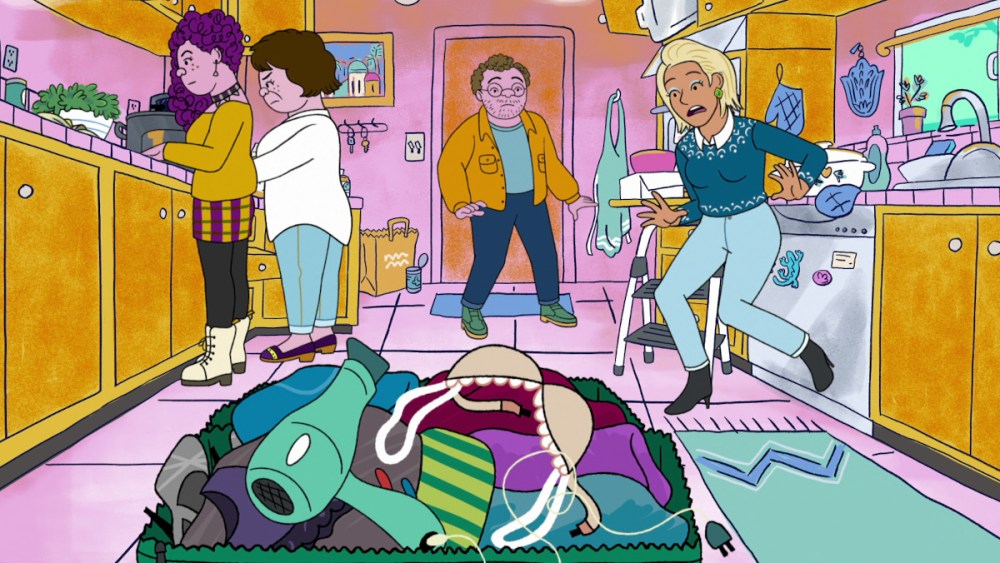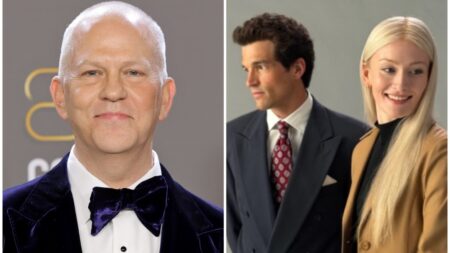After the overwhelming success of “BoJack Horseman,” creator Raphael Bob-Waksberg returns with “Long Story Short,” a sitcom animated series centered on a Jewish family from Northern California that will premiere on Netflix on Aug. 22. The series, which unfolds across different timelines and emotional landscapes, finds its humor and heart in specificity, something Bob-Waksberg leans into unapologetically.
At this year’s Annecy Animation Festival, Bob-Waksberg sat down with Variety to discuss the show’s portrayal of Jewish identity, why specific stories work best and his new show’s adoption of a more grounded aesthetic.
Raphael Bob-Waksberg
Credit: Netflix
Variety: This show feels more focused than “BoJack,” based on a single family from a very specific culture. Did that feel risky or liberating?
Raphael Bob-Waksberg: I wonder about that. I say this not to say you’re wrong, but maybe as a writer for Variety, “BoJack” might feel more accessible and broad. But for the vast majority of our audience, who don’t know anything about show business or Hollywood or care, there was some concern that that would be a limiting factor. And we never shied away from the specificity of jokes about points on the back end or the differences between an agent and a manager, or references to Margo Martindale, who I think maybe 80% of our audience didn’t even realize was a real person. But I think people found their own way in. Through the generalities and through the specificity. Because it was so specific, it felt real in a way, and people made their own connections. And that really encouraged me to go, I would say, as specific in a different direction on this show.
And why did you pick this version of specific for your new show?
I felt like I wanted it to be a specific family, and I wanted them to be Jewish and from Northern California, mainly because I’m Jewish and from Northern California, so I could write authentically about that world and write about specifics in a way that I would just have to be guessing if it was like… you know, if I was writing on “King of the Hill,” for example. Once I’m writing about a Jewish family from Northern California, I wanted it to feel as real as I could. Like, they’re going to talk about being Jewish.
I think there are all kinds of Jews, and so I don’t want to say any representation is doing it wrong. But there are Jewish characters that don’t conform to my experience, which is fine, but I wanted to tell a story about Jews who feel like being Jewish is a part of their lives. It’s not just an additional flavor label you can throw on. It’s who they are.
The outsider girlfriend character can certainly help anchor viewers in this world, too. Was that a way in for the audience?
Who can’t relate to meeting your partner’s family? Who can’t relate to being the outsider in an extremely insular setting where people have their own rules, their own norms? Again, you lean into the specific, and people find their own way in. If it feels true and thick, there will be universal things in there. People will also feel like, “Oh my God, that’s my story.”
Does working inside a culture that has very specific norms that aren’t well-known in the mainstream give you more opportunities for comedy?
That’s right. I think it does open doors. Because, “Oh, this is a joke only our show could make,” right? I don’t want to claim there’s never been any—like, I don’t want to say we’re breaking new ground for representation. I’ve seen most of the Jewish shows. You got “Seinfeld,” “Transparent.” I was just reading an article in the New Yorker about one of the first big sitcoms, which is “The Goldbergs” [1949-56], about a Jewish family. And I think there have been two hit shows called “The Goldbergs,” right? That’s how successful telling stories about Jews is.
But I do feel like there are areas that we get to explore that not every show does. Not even every Jewish show does. Because everyone is different. So to talk about the specifics of these characters and the way they identify, and the people that they are, and kind of leaning into that, not just on the Jewish angle but in some of the other ways these characters identify, as you’ll see in future episodes. Thinking of the jokes and the stories that only our show could do makes it feel like, oh, this is it, why would we do anything else?
There’s a lot of talk in the industry about identity right now. Did telling a personal story feel cathartic?
There are things that are personal about it that do feel cathartic to express. But that was true about “BoJack” too. There are things that obviously… there’s a lot of that project that is not like me. But there were things on that show that felt like, “Oh, this is an opportunity to express some of these feelings, some of these experiences that I don’t know how else to articulate.” I think if you are honest and trying to investigate and interrogate something, I think audiences will… you have to assume you’re not the only one who feels this way, right?
Visually, this show is very different from “BoJack.” Why the change?
I think a comic strip is a nice way of thinking about it. Lisa Hanawalt did the art for the show, and for “BoJack” as well, and was experimenting with, “What if we just did dots for eyes?” And then we did a lot of tests to see how expressive that could be. And actually, it was very expressive. You can do a lot with that.
The universe itself is more visually grounded than “BoJack,” and not just because there are no animal people. I think in some ways, “BoJack” was a TV show that was aware that it was a TV show. The characters weren’t breaking the fourth wall, but there was a lot of irony in the joke-telling. That kind of on-the-nose, “Hello, character actress Margo Martindale” quality. It felt like on this new show, what if we abandoned that as a crutch and just leaned into the idea of like, “No, this is real.”
On the other hand, there are ways in which this show is much cartoonier than “BoJack,” just in the movement of the characters and the sketchiness of the backgrounds. In the design, we are leaning into more of the impressionistic or expressionistic. I can never remember which is which, but whichever one applies.
The backgrounds are sparse, but it works, especially with such a character-driven narrative.
We really thought about that too. Let’s be smart about how we’re spending our money. In some ways, the show is very ambitious. We’re jumping around in time. We’re going to see different designs of all these characters. We’re constantly redesigning. We don’t have a lot of home set locations. Every episode kind of could be its own pilot. So given that, let’s not spend a lot of time animating background extras walking through the frame, right? Set a precedent that sometimes people are going to be frozen in space. Sometimes I’m going to suggest things with a squiggle. We wanted to be deliberate about it and lean into it so it feels intentional and not like, “Oh, they’re being cheap here.”
Only in the final moments of the first episode can we get a clear idea of what this show might be, but I’m told it becomes much clearer as the season moves on. Do you worry at all about audiences sticking with the show past the pilot?
One thing that I’ve been delighted by in these early conversations about the series from people who have only seen one episode is how many people seem to get it just based on the pilot. There’s more to get about the show and how it operates in later episodes, but I feel like a lot of people… because we have that little button at the end coming forward, that kind of tells you, “Oh, we’re not just going to be living in 2004 this whole show.” So I actually can breathe a little, like, OK, I don’t have to worry quite as much.
How do you balance the amount of information you give the viewers to keep them watching?
I’ve heard the complaint that showrunners these days are getting too luxurious with their storytelling, and you have to get to the end of the first season to get a hint of what the show even is. One lesson I learned from “BoJack” was that you can’t depend on your audience to stick around. I really thought, “Oh, isn’t this fun? We’re going to set up this kind of show and then by the end of the first season, people are going to go, ‘Wow, it’s this whole other kind of show!’” And it didn’t even occur to me that people might not make it to the end if they didn’t like the first kind. So the goal is to leave a little discovery in every episode, but also make sure the audience knows what they’re getting in a way that’s exciting.
Making shows for Netflix, you’re not limited by broadcast timing anymore, but do you still follow a structured format?
One of the things I love about working in animation is that we are restricted in ways that we wouldn’t be in live action. We have to animate every frame. So we can’t just shoot a bunch of film and then edit it down to whatever feels right. We’ll often write long and then edit down in radio play and get to those 22 minutes, because that’s what we have the budget to animate.
That discipline has really made my shows much stronger. At the end of the day, I’m really glad our shows are tight. The new show really benefits from it—it keeps you focused, it makes the show feel denser, you’re overlapping stuff, putting jokes on top of jokes. And I also write the show in acts, even though we don’t have to. Structurally, it’s just helpful to think of a first act, second act, third act. There are no ad breaks, but it’s still useful to write like there are. And I appreciate that we don’t have to be slaves to it. Sometimes the act break is in the middle of a scene and the scene just continues. So I feel like I do get the best of both worlds.
Read the full article here








